Another 1980s Sega 8-bit Arcade Board? Flashgal
There’s the System 1. The System E. Even the Future Spy. But Sega released games on so many different platforms around Zilog’s Z80 processor! Though today, it’s really only Sega by virtue of their role as a publisher. Let’s take a look at Flashgal. Will we end up trying to untangle a maze of Japanese corporate history? Who knows!
A Hero, but not My Hero
Flashgal is a two-dimensional proto-beat ‘em up released in November of 1985; just a few months after another Sega partner, Coreland, put out My Hero on their System 1 hardware. That game I described as a cross between Kung Fu and Super Mario Bros., thanks to its platformer-like segments and gameplay oriented around protagonist Stephen’s jump-kick.
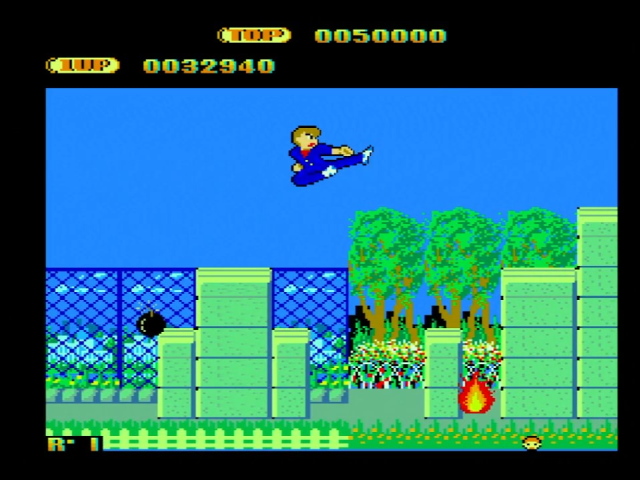
Flashgal, on the other hand, though it has more than a superficial resemblance to My Hero in style, leans much more towards the classic Kung Fu style of things.

Sure, it’s a 2D plane and you can jump, but there’s almost no real platforming here. The titular heroine uses her punches to mow down rows of villains on her way to… the White House? Sure, why not.

In this game mode, you have an energy bar that is constantly draining, but very slowly; Flashgal can recover it by simply punching an enemy. After this, though, the gameplay takes a sudden shift. Flashgal realizes that being able to take a leisurely walk from the Statue of Liberty to the White House just isn’t a fast enough mode of transportation, and grabs a motorcycle.
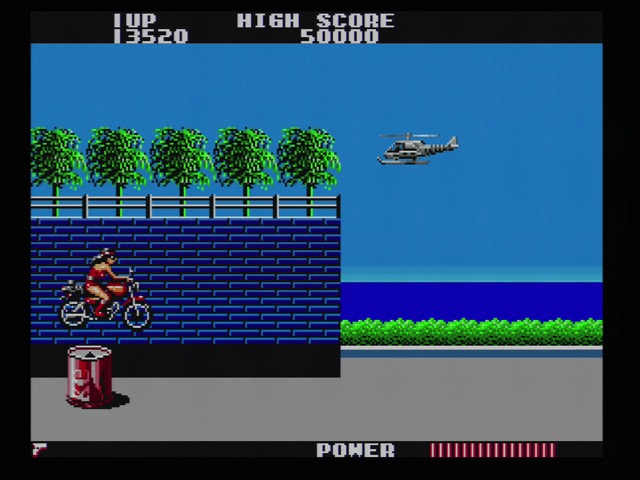
Unfortunately, this is also where the game gets a lot less fun. Pretty much hitting any obstacle in these vehicle stages immediately destroys Flashgal, and while the game has unlimited continues and mid-level checkpoints are frequent, one can only get so much fun out of constant credit-feeding.

It’s a shame, because the game’s dedication to variety isn’t necessarily a bad thing. The levels continue in all sorts of ways. For example, a trip to Japan, where Flashgal arms herself with a sword, as you do.
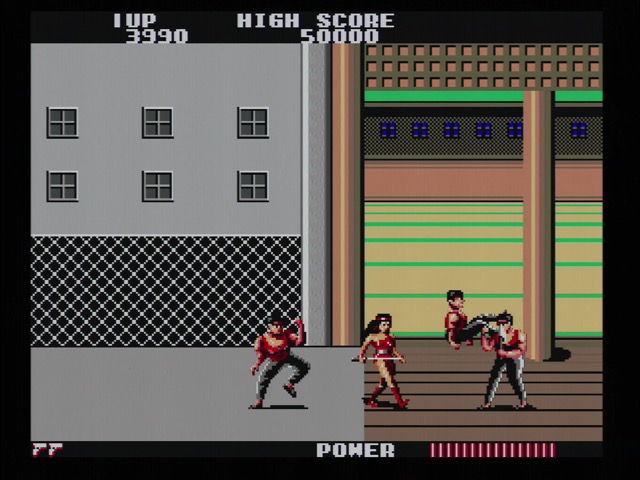
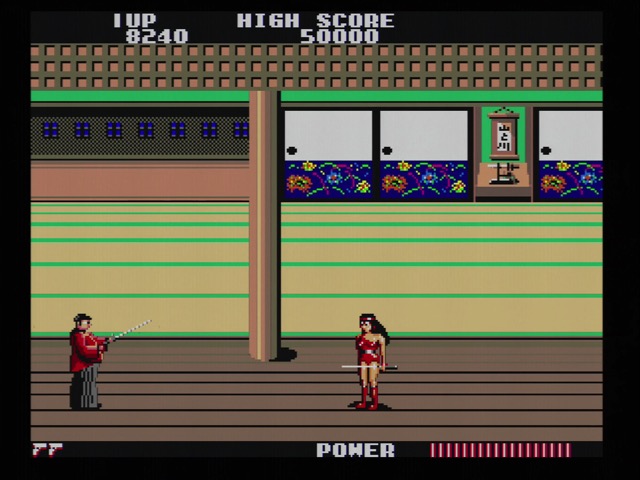
Other levels go back to the stage one beat ‘em up style, which I think is probably where this game is at its strongest. It’s also mostly just a dumb beat ‘em up, but those are fun now and then.
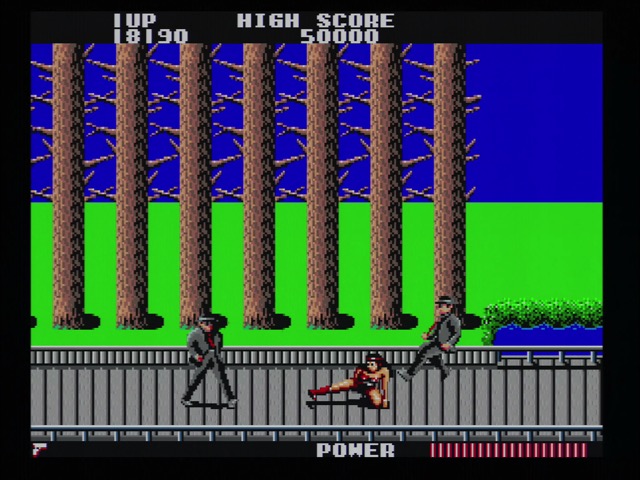
Unfortunately, on this particular playthrough I recorded I didn’t get all the way through, because another vehicle level just frustrated me too much. This basically required memorization of each point, which was fun in Truxton, but not so much here.
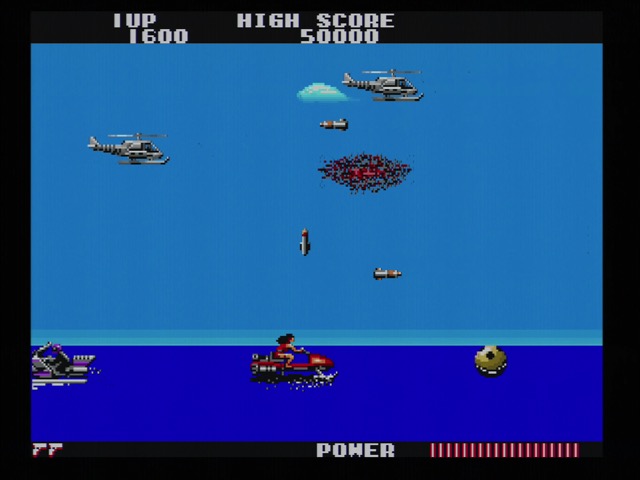
Who made this?
As noted, Sega was the publisher for Flashgal. And even then, seemingly only in Japan. (Romstar is credited with the US) This particular board I bought from Uruguay, but presumably it must have originated in the land of the Rising Sun.
So what this means is that it’s not quite a Sega board. It’s definitely not System 1. Sure, it has two Z80 CPUs– in fact, as Sega also commonly did, it’s actually using NEC-made clones, the uPD780C. Unlike the later NEC-made 8088 and 8086 clones, these are pretty much identical, just second-source parts. But look at the audio circuit– sure, there’s two square wave synthesizers, but these aren’t SN76489As, but AY-3-8610s!
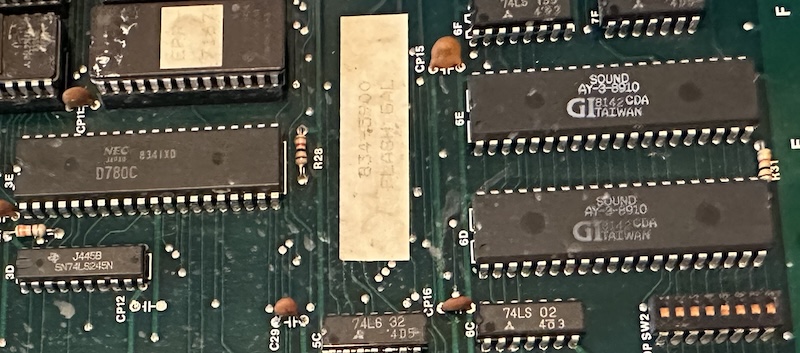
The CPUs, audio chips, and edge connector (non-JAMMA! and not System 1 either) are all on a smaller PCB mounted above the main PCB. Otherwise it’s all discrete logic, ROMs, and RAM, with a few programmable logic arrays thrown in for spice. The graphics style had made me wonder if there was a TMS9928A in there, as it reminded me of MSX games, but it’s a bit too colorful for that.
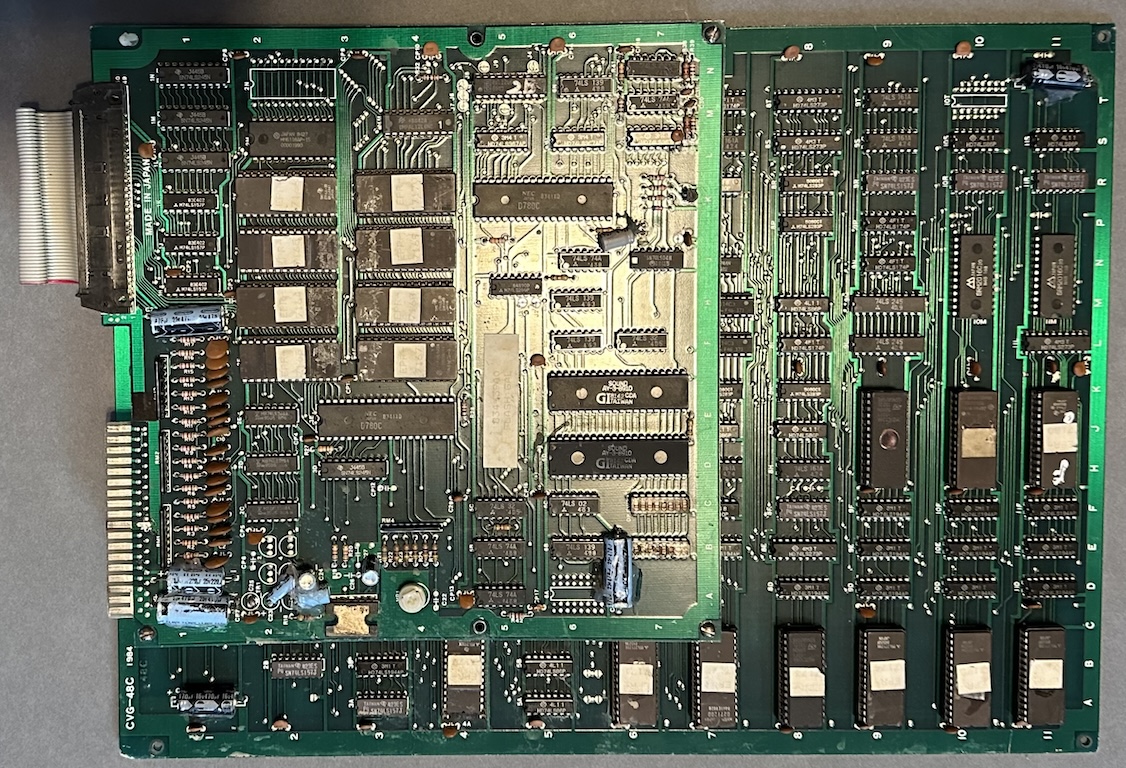
It might be worth comparing to the contemporary Sega System 1 and Sega Zaxxon hardware.
| Sega System 1 | Sega Zaxxon | Flashgal | |
|---|---|---|---|
| Main CPU | 4MHz Z80 | 3MHz Z80 | 3MHz Z80 |
| Audio CPU | 4MHz Z80 | - | 3MHz Z80 |
| Audio | 2x TI SN76489A | Discrete | 2x GI AY-3-8610 |
| Display resolution | 256x224 | 384x264 | 287x223 |
| Tilemap resolution | 256x256 | 256x256, 4096x256* | 512x256** |
| Tilemap count | 2 | 2 | 2 |
| Scrolling tilemap count | 1 | 1 | 1 |
| Sprites | 128 | 32 | 24 |
| Palette | 8-bit RGB (3x3x2), later 12-bit RGB (4x4x4) |
9-bit RGB (3x3x3) | 12-bit RGB (4x4x4) |
* - Hardware axonometric perspective, tilemap in ROM
** - Non-visible area of static tilemap overlaps with sprite RAM
They’re remarkably similar– the Congo Bongo variant of the Sega Zaxxon even added a second (2MHz) Z80 and two SN76489A sound chips. So why did Sega implement multiple boards with the same capabilities? Well, we already know Zaxxon and Congo Bongo weren’t Sega– the hardware design went to Ikegami Tsushinki, coming off their Nintendo partnership after it went sour, and they brought in a unique axonometric perspective.
Flashgal is also not a Sega product. The development is attributed by Sega Retro to Kyugo Trading, while GDRI takes it a step further and attributes the game development itself to Takeshi Tozu’s company Whiteboard, which later became Santos. Layers of contractors was pretty common in the Japanese game industry then, and isn’t unheard of now, for that matter.
Whiteboard was founded in 1985, the same year Flashgal was published. But our board has a date of 1984 on it, along with the code of CVG-48C.
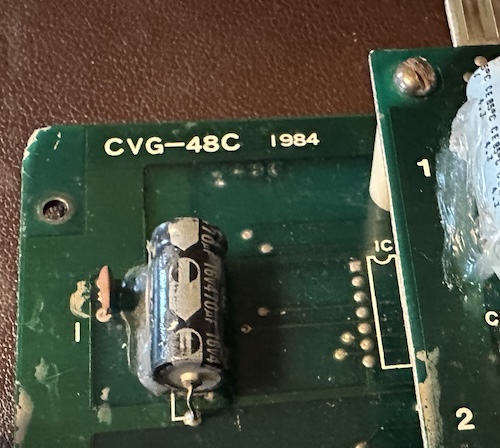
Takeshi Tozu was formerly head of Crux. Crux, a successor to Orca (which Takeshi Tozu had previously run), was pretty short-lived, it seems to have been founded just a year earlier in 1983 after Orca itself failed. MAME notes that the first games to use this hardware were indeed from Crux in 1984: Gyrodine and Buzzard, both of which are vertical shooters.
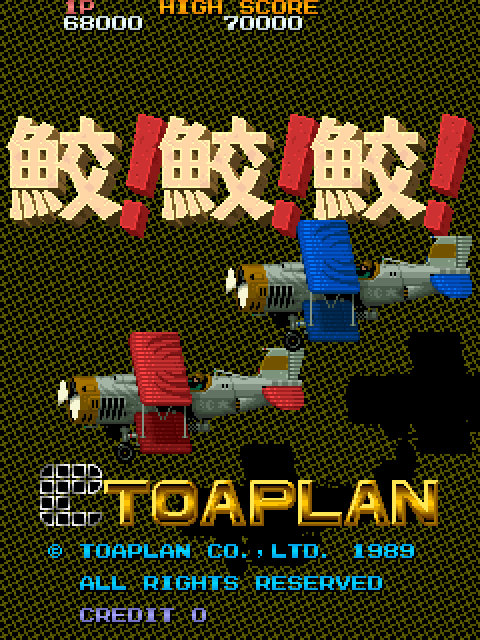
And who else have we seen make vertical shooters? That’s right, Toaplan, of Truxton and Fire Shark fame. Toaplan is another company founded by former Crux employees– well, sort-of, since it existed before but the gaming division was only established then. Oof! That’s a lot of layers. The gaming industry history is quite tangled even this early.
Interesting, while Kyugo and Tozu’s Whiteboard/Santos seems to have ended up with the rights to Crux’s arcade hardware, it was the developers of Gyrodine who went over to Toaplan and created its spiritual successor, Tiger-Heli. If I ever get my hands on a Tiger-Heli board, it might be fun to compare its capabilities.
